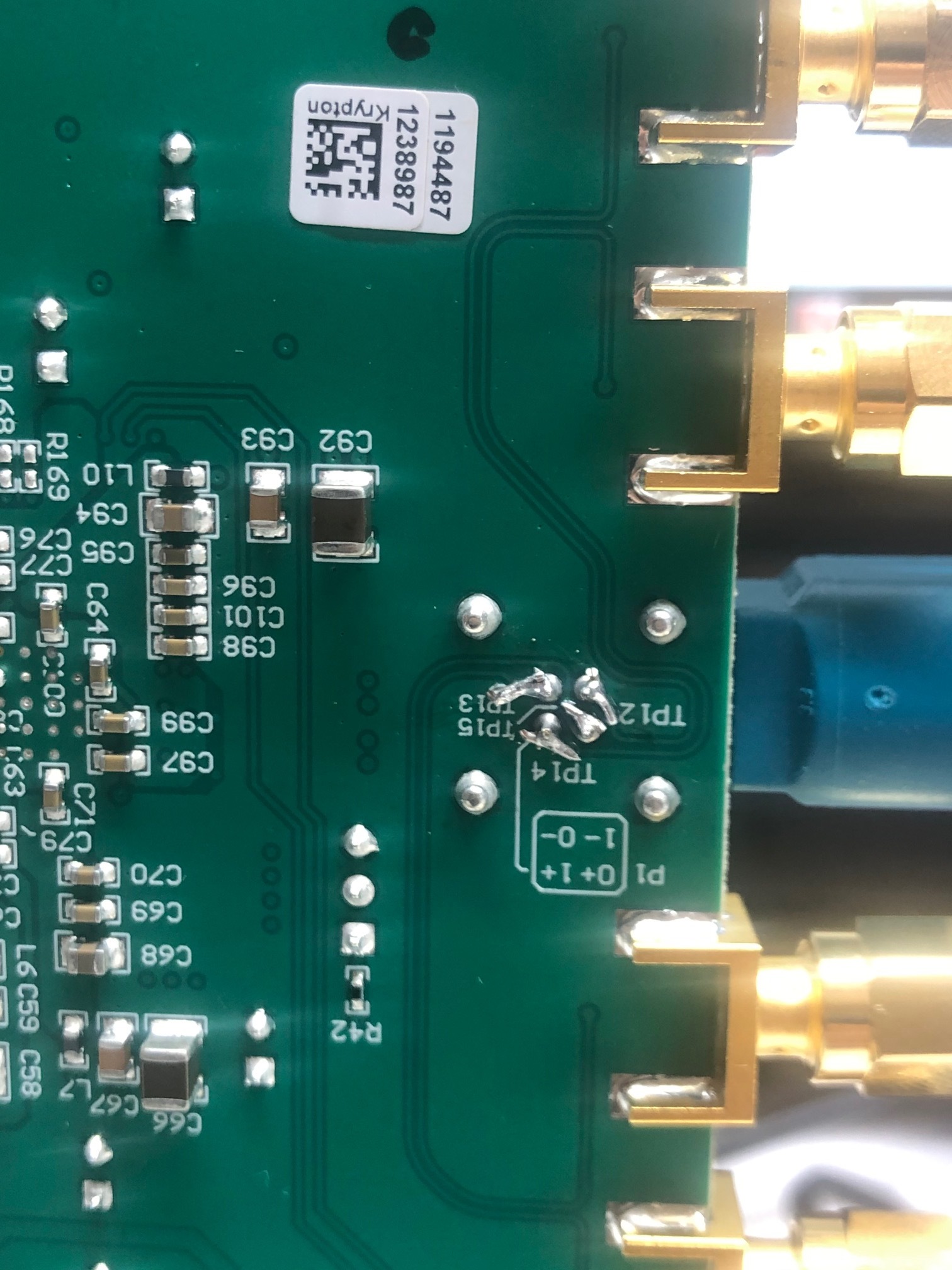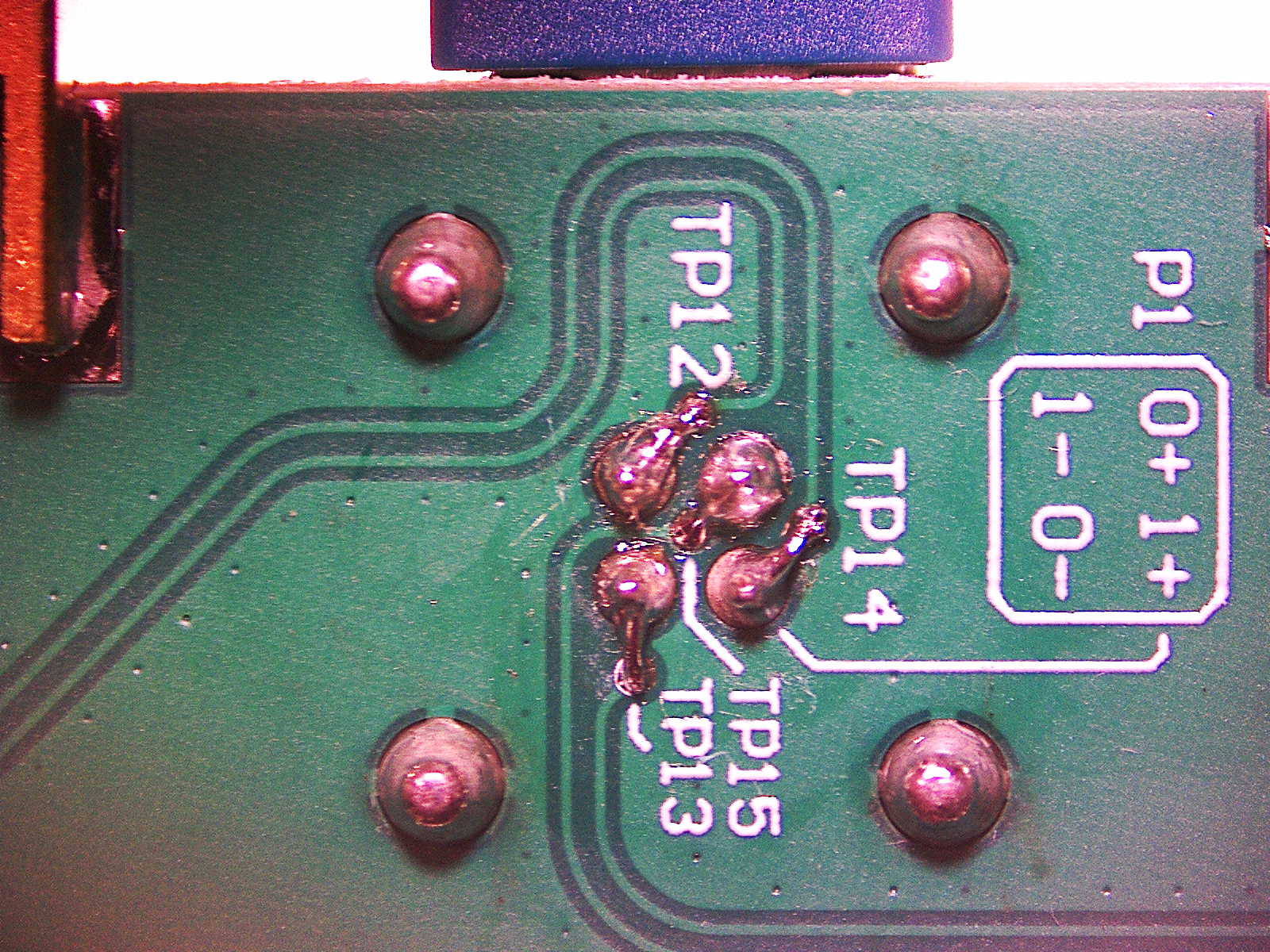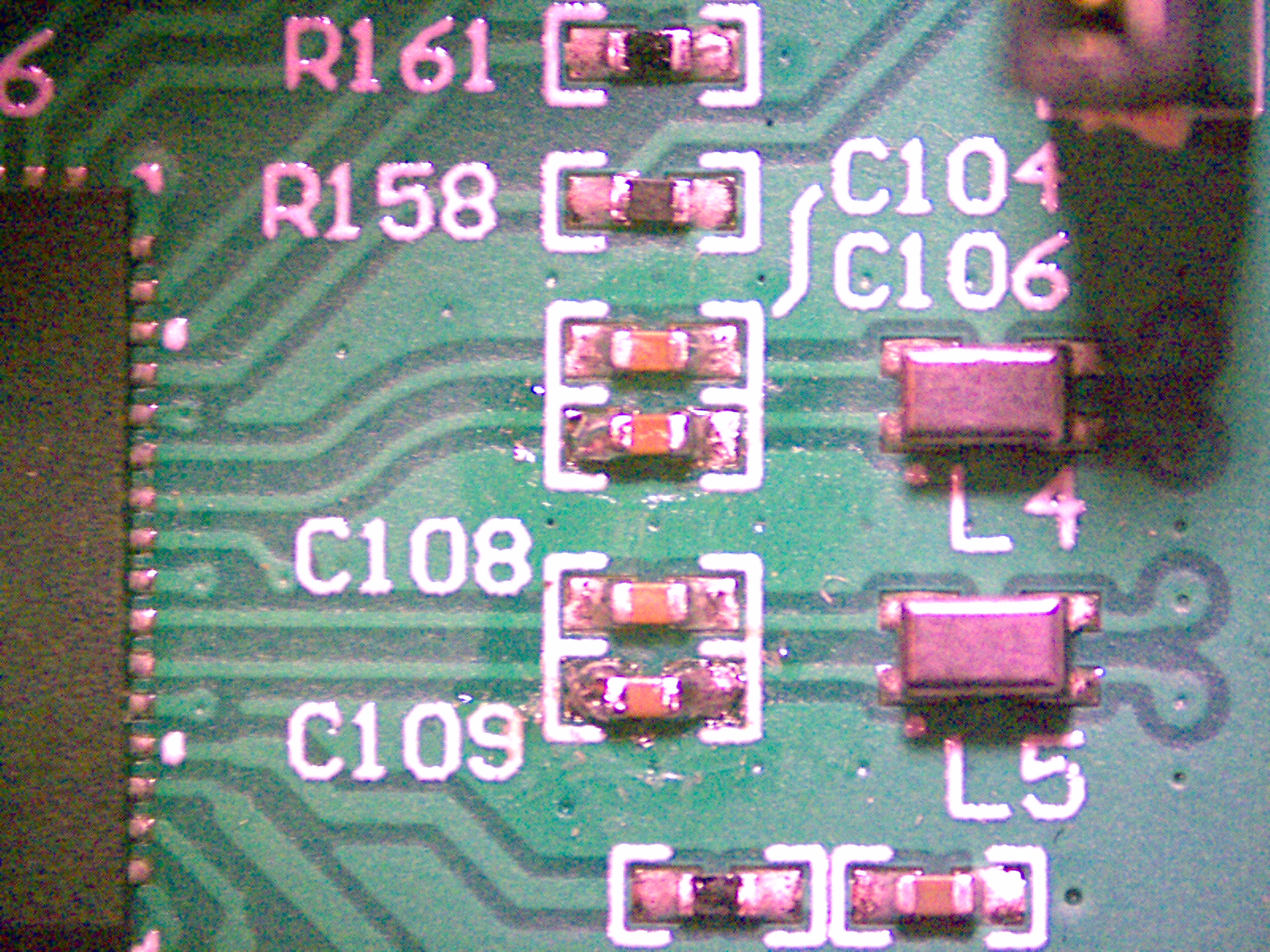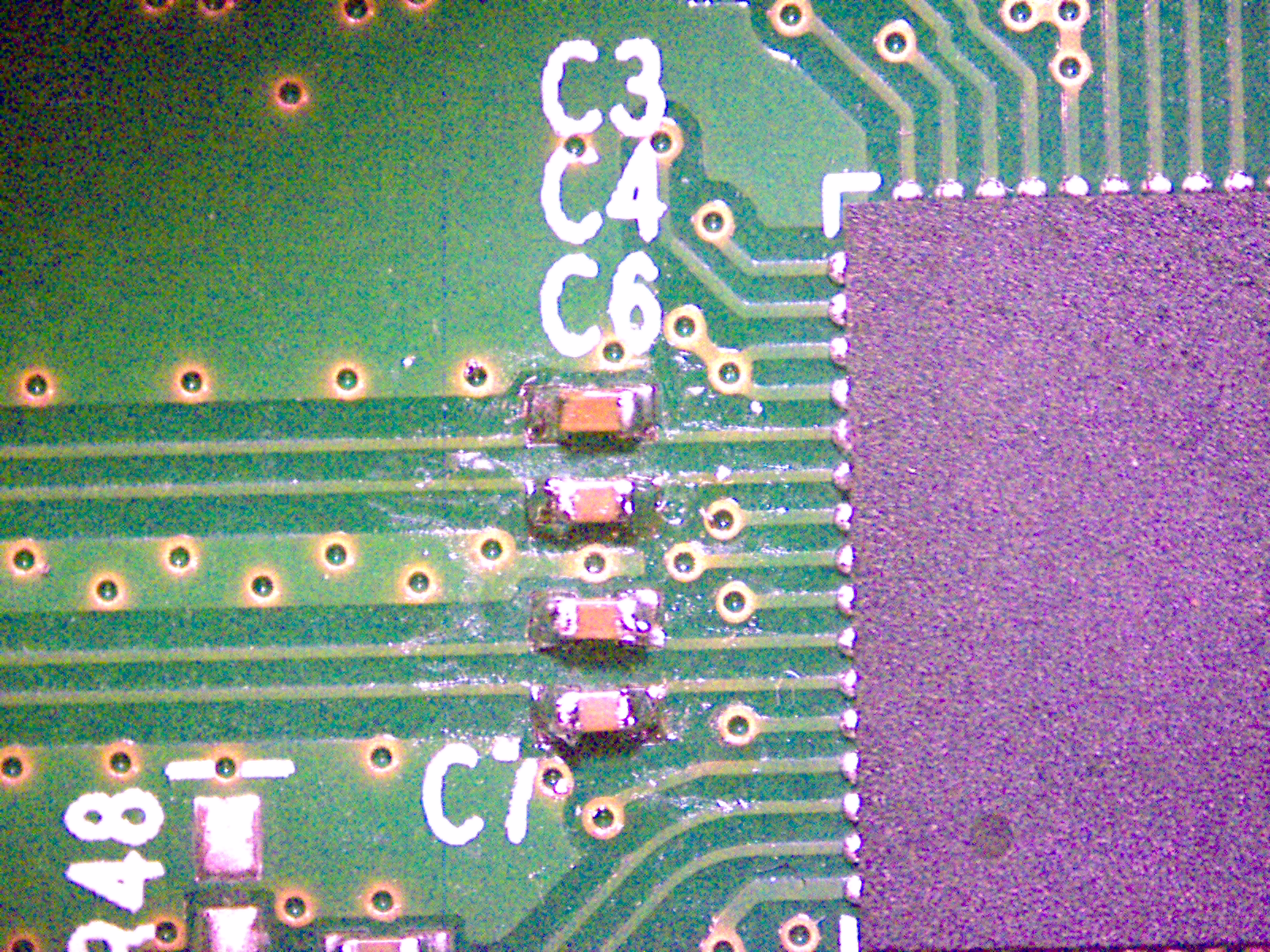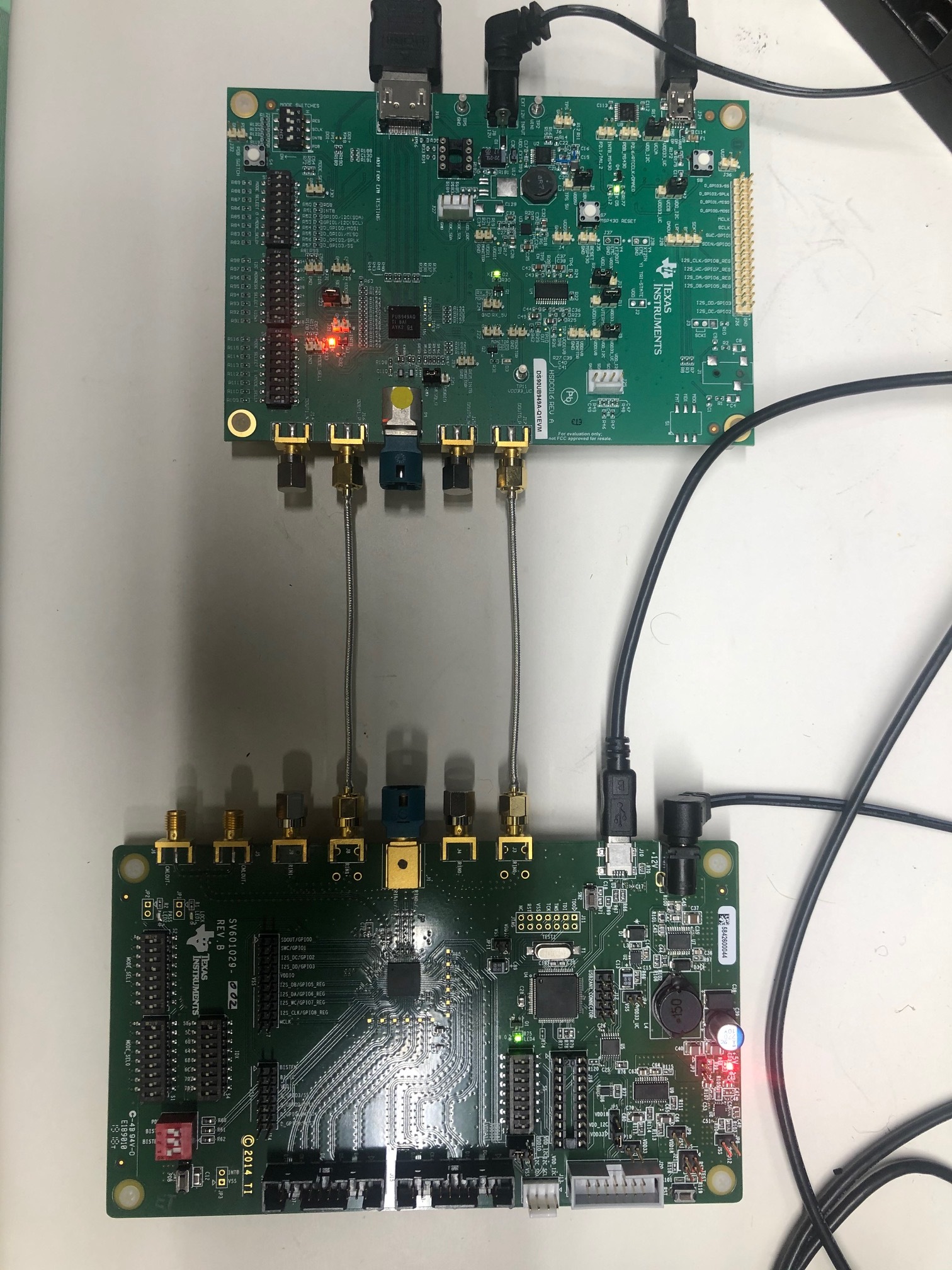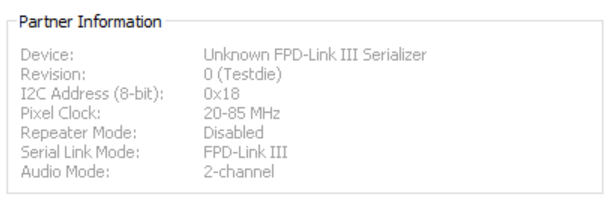Other Parts Discussed in Thread: DS90UB949-Q1EVM, ALP, USB2ANY
Hi, I have found instructions on how to connect the SMA connectors in this forum for the DS90UB949-Q1EVM, but not for the "949A" variant. It appears on the back-side of the board, next to the P1 FAKRA connector, that there are test-points which could be soldered to with tiny jumper wires. The test-points appear connected to the SMA connectors, so I could use jumper wires to connect them to the corresponding pins on the P1 connector. Is this the intended way of connecting the SMAs? It seems a bit messy and would definitely cause an impedance discontinuity.
On a related note, are there instructions somewhere how to set-up the SerDes connection using unbalanced (rather than differential) coax connections?


